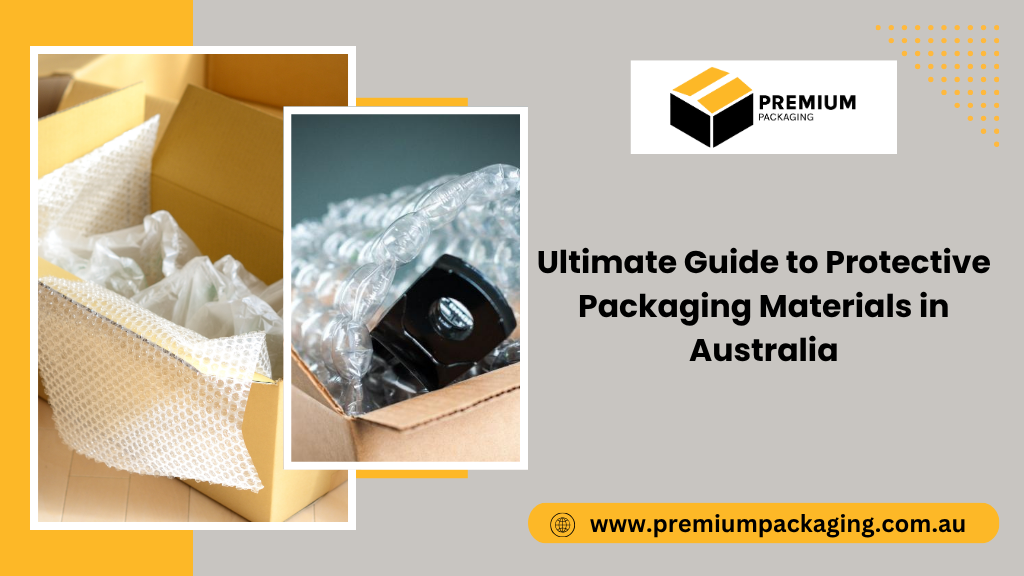Whether you’re shipping fragile glassware, electronics, or industrial components, using the right protective packaging materials can make or break your delivery experience. In the Australian market, where eCommerce and manufacturing industries are booming, secure packaging is not just a necessity—it’s a priority.
For businesses sourcing reliable supplies, a trusted packaging materials wholesale supplier becomes essential to keep operations cost-effective and efficient.
Let’s explore the top materials, benefits, applications, and trends for protective packaging in 2025.
What Are Protective Packaging Materials?
Protective packaging materials are solutions designed to cushion, wrap, block, and brace items during shipping or storage. Their goal is to protect products from impact, vibration, moisture, and other potential damage during transit.
These materials are used extensively across industries such as:
- eCommerce & Retail
- Food and Beverage
- Automotive and Industrial
- Pharmaceutical and Healthcare
10 Most Common Protective Packaging Materials in Australia
Here’s a list of top materials used by Australian businesses:
| Material Type | Description | Use Case Examples |
| Bubble Wrap | Plastic sheets with air-filled bubbles; great cushioning | Fragile goods, glassware |
| Foam Rolls & Sheets | Lightweight and flexible; available in EPE, polyurethane, and more | Electronics, medical devices |
| Void Fill Packaging | Includes air pillows, packing peanuts, and paper fill | Online retail boxes |
| Corrugated Wrap | Flexible cardboard with fluting structure | Furniture corners, home appliances |
| Edge Protectors | L-shaped or U-shaped guards for product edges | Pallets, machinery, framed goods |
| Shrink Wrap | Film that tightly shrinks when heated to secure items | Multipacks, food containers |
| Stretch Film | Elastic plastic film for pallet wrapping | Warehousing, industrial shipping |
| Mailer Bags | Padded or bubble mailers for soft or small items | Fashion eCommerce, books, accessories |
| Honeycomb Paper Wrap | Eco-friendly paper that forms a 3D honeycomb grid for cushioning | Sustainable packaging initiatives |
| Anti-Static Foam | Foam that reduces static electricity | Circuit boards, tech products |
Why Choosing the Right Material Matters
In 2025, with shipping damage costs rising globally by over 8% YoY, selecting the appropriate protective packaging material can lead to:
- Lower product return rates
- Improved customer satisfaction
- Reduced shipping insurance costs
- Enhanced brand perception
A report by Sealed Air reveals that 60% of consumers are unlikely to return to a brand after receiving a damaged product. This makes packaging a frontline part of your brand experience.
Trends in Protective Packaging for 2025
- Sustainability First: Companies are switching to biodegradable or recyclable protective materials like honeycomb wraps, paper void fills, and starch-based peanuts.
- Automation Ready: Businesses prefer materials compatible with automated packaging systems to increase speed and efficiency.
- Custom-Fit Solutions: Die-cut foam and molded pulp packaging are on the rise for tech and electronics.
- Smart Packaging: Some brands are exploring tamper-proof and QR-enabled packaging that tracks damage or movement during transit.
How to Choose the Right Protective Packaging
Here are factors to consider when selecting materials:
- Fragility of Product: Use bubble wrap, foam, or air pillows for delicate goods.
- Shipping Method: Longer distances and multiple handlers increase damage risk.
- Size & Shape: Use edge guards and corrugated rolls for odd-sized or heavy items.
- Environmental Impact: Eco-friendly brands should consider recyclable or biodegradable options.
- Budget Constraints: Choose high-performing low-cost options like kraft paper fill or mailer bags.
For bulk orders and B2B support, packaging wholesale australia offers competitive rates and reliable delivery.
Industry Statistics
- $3.6 Billion – estimated size of the Australian packaging market by 2026
- 33% – Australian consumers willing to pay more for sustainable packaging
- 12% – annual growth in demand for protective packaging due to eCommerce boom (Statista)
Final Thoughts
Using the right protective packaging materials is more than a logistic decision—it’s part of your brand identity and customer retention strategy. As the eCommerce landscape evolves, so does the demand for smarter, greener, and stronger packaging.
Make sure your business is ahead of the curve.
5 Most Asked FAQs about Protective Packaging Materials
1. What are the best protective packaging materials for fragile items?
Bubble wrap, foam sheets, and molded pulp are ideal for fragile goods like ceramics or glassware.
2. Are protective packaging materials recyclable?
Many materials like corrugated cardboard, kraft paper, and honeycomb wraps are recyclable. Foam and plastic wraps may not be, unless specified.
3. What’s the difference between shrink wrap and stretch film?
Shrink wrap tightens with heat for bundling, while stretch film is used to wrap and secure items on pallets.
4. Can protective packaging reduce shipping costs?
Yes. Proper cushioning reduces product damage and return rates, which indirectly saves shipping and handling costs.
5. What is eco-friendly protective packaging?
It includes recyclable paper wraps, biodegradable packing peanuts, and reusable materials like honeycomb paper or compostable mailers.
